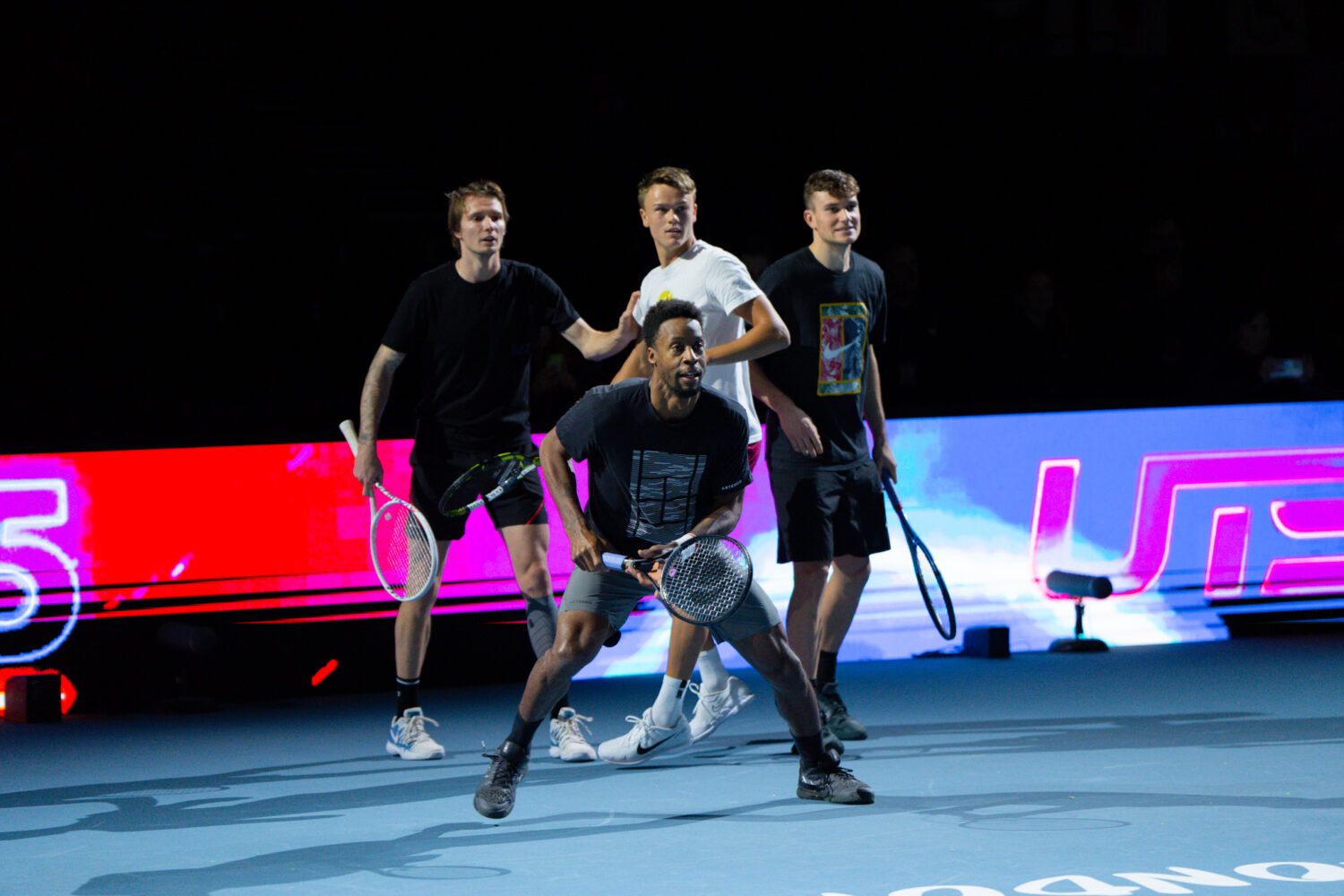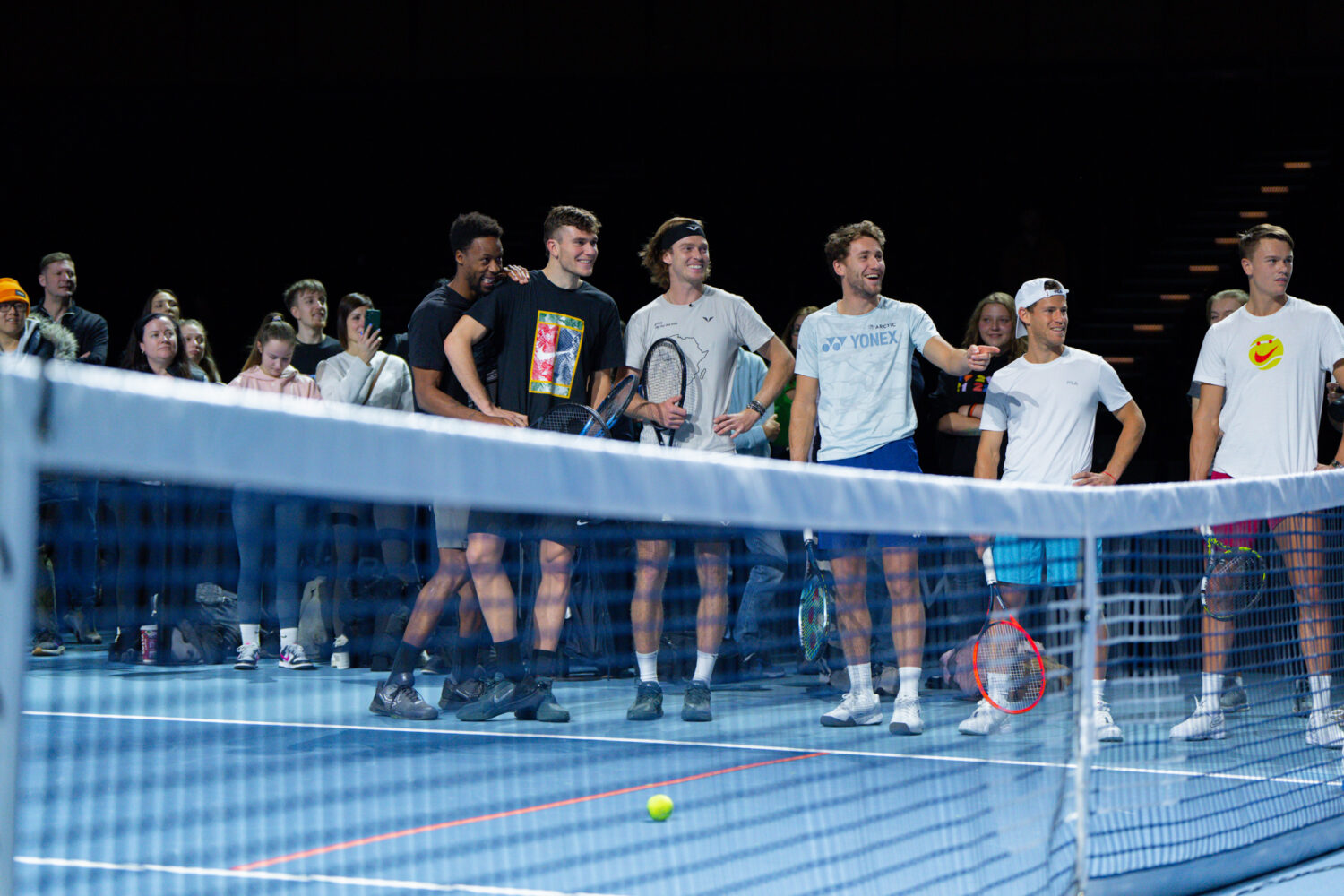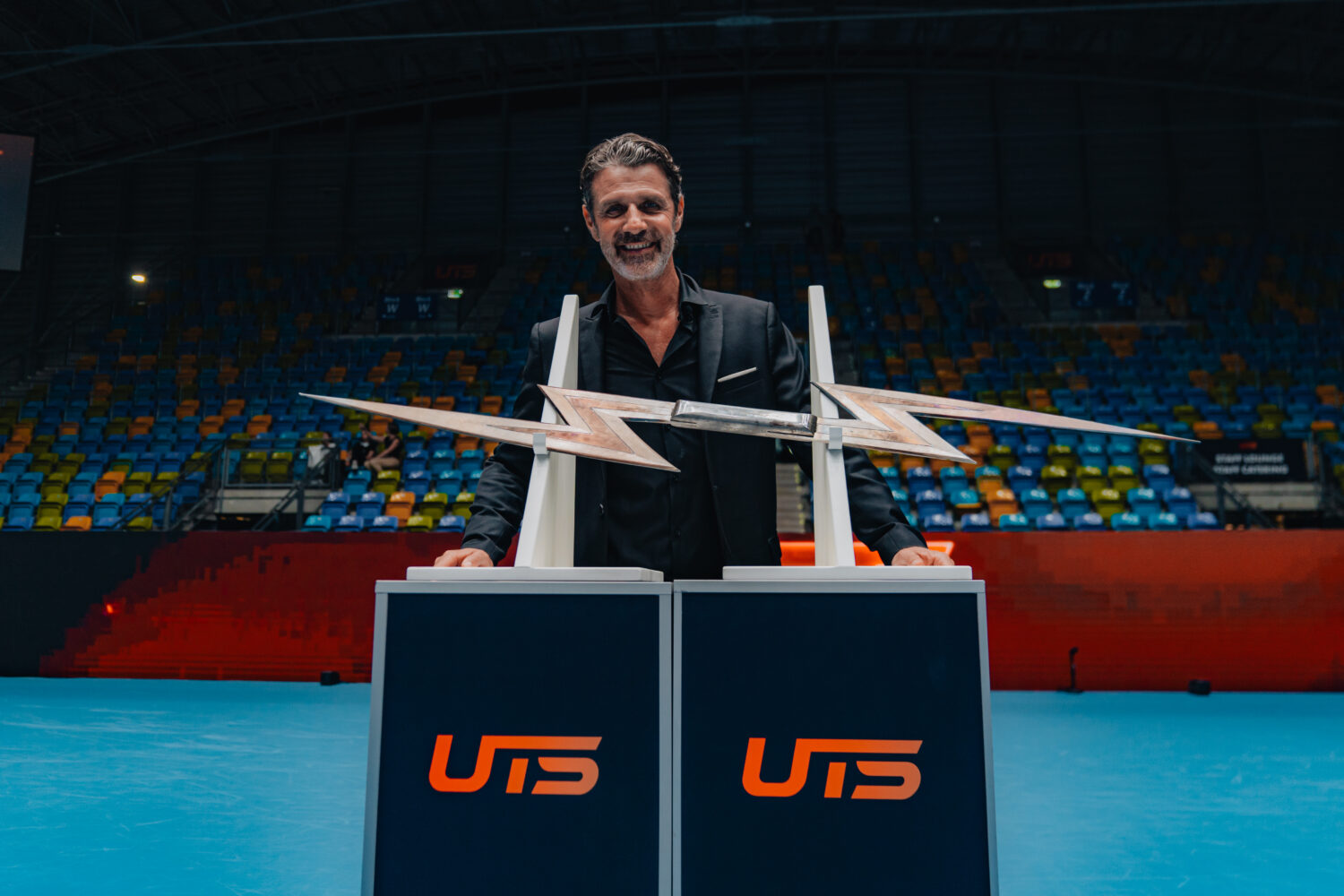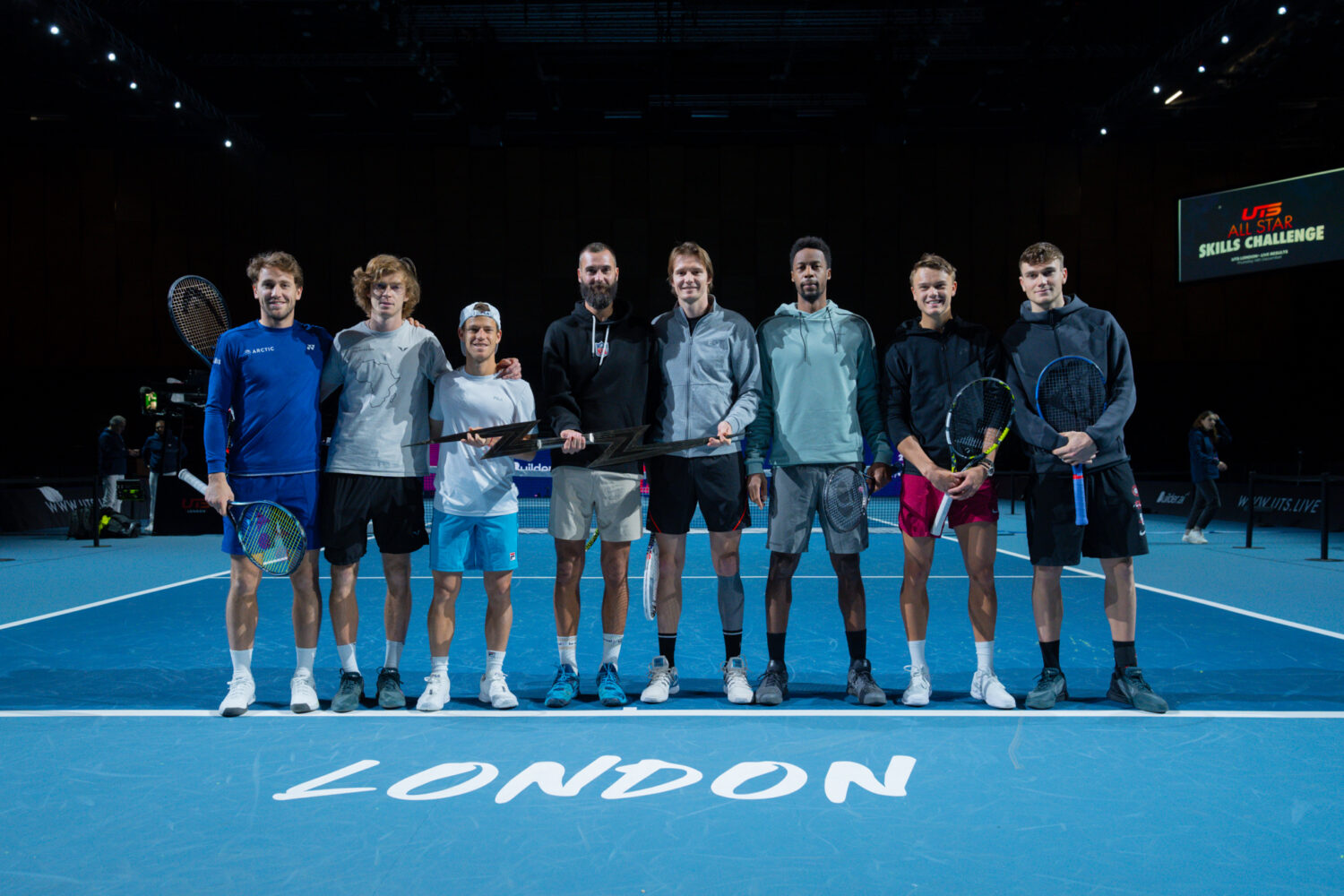UTS brings the va-va-voom back into tennis

Is UTS tennis’s ‘Butterfly Effect’? The Butterfly Effect, coined by American Meteorologist and mathematician Edward Norton Lorenz as part of his Chaos Theory, is a concept whereby a large consequence is driven by small changes. The idea is that the butterfly, whilst small and delicate, is able to cause big change – a typhoon even, by the merest fluttering of its tiny wings if at the right moment, and in the right place.
The butterfly is also of course the perfect metaphor for change. If UTS (Ultimate Tennis Showdown) had a mascot, perhaps it would be the butterfly. Because even on a small scale, UTS could well be the seed that plants future tennis – however that may look.
There are rumblings of change in tennis. Namely, an alleged LIV Golf-style elite tennis tour to rival the ATP and WTA tours. Whether there is any truth to these rumblings, time will tell. But players are talking. Notably, World No. 1 Novak Djokovic, who recently commented that whilst he respects tennis’s history and traditions, the sport needs innovation: “I think we need to try to adjust to the modern times and try to understand what the younger audience wants and really make the tennis more appealing to that group”.1
These are words that chime well with UTS founder Patrick Mouratoglou, who created his league following the Covid-19 lockdown, for this very reason. Mouratoglou says that tennis is losing a younger fan base. The average tennis fan age is 61 years and increasing, which puts tennis “currently in a danger zone”.2 I spoke with Mouratoglou in November 2023 – a month prior to the UTS Grand Final. During both our interview and the tournament press conferences, Mouratoglou emphasized that his aim has never been to replace tennis. Far from it, as he has been in love with the sport since the seventies. He also shrewdly acknowledges that trying to change tennis would not go down well with tennis traditionalists. Rather, he is confident that UTS has a place alongside tennis. He compares it to Twenty20 cricket (a shortened format of test cricket): “I would say UTS is the 20/20 of cricket… it is simply a very modern way to showcase tennis”.3

Mouratoglou’s decision to hold his UTS Grand Tour Final in London was astute: “we want UTS to be going to prestigious cities. London is perfect because it’s a city that is international, has an incredible culture for tennis that of course has a grand slam, so there is a real interest for tennis. British people know the players, so they will realise how prestigious UTS is when they discover the names. Everything is put together so well to create an incredible event, and of course London has hosted the ATP finals for many years.”4 All perfectly true of course. There is also a tennis shaped-hole in London’s end-of-year tennis calendar, now that the ATP year end finals are in Turin, and the popular Champions Tennis exhibition event at the Royal Albert Hall is no longer. Thankfully, UTS has filled that hole.
The UTS Grand Final, held in London’s Excel from 15 – 17 December 2023 proved to satiate that appetite for something new in tennis, as reflected in the numbers. It was an overwhelming success, playing to a packed stadium over each of its three days of afternoon and night sessions. Some sessions sold out in advance. I hadn’t seen this level of sustained energy and excitement at a tennis tournament quite on this scale before. The entire stadium was as invested and switched on as the players were, over every session. It’s a rarity to see such prolonged fervour, whether at a slam, ATP 1000, 500, 250, challenger or any other exhibition tournament, for that matter. But this is no ordinary tennis tournament. It is, as its tagline suggests: “Tennis like never before,”5 and as its name suggests, the Ultimate Tennis Showdown.
London welcomed UTS, despite its timing: the weekend before Christmas. Not only is this the busiest weekend in the retail calendar for Christmas shoppers, but there was certainly no shortage of festive events already taking place in the capital. Forget the capital, there were several other events taking place under that very same roof that weekend at the Excel arena. They included a Disney exhibition, a Kingdom of Winter show, and to top it all, an International Horse Show! On my second day covering the tournament, I arrived early, opting for the long route through the venue. Walking past the other events (and many horses), I found myself pondering the ridiculous: what if, somehow, a horse or two set free and galloped their way over to the tennis? Afterall, that’s where the fun was. That’s where the crowd, noise, music, cheering and energy were coming from. I wouldn’t blame them. Although I don’t think the world is quite ready for a polo-tennis hybrid!
It is, however, clear that UTS has piqued the curiosity of new and existing fans, wanting to see this version of tennis reinvented. So – how has UTS brought the va-va-voom back into tennis?
UTS is a shortened version of tennis for the modern world. It is a tennis league with new rules and a reinvented, fast-paced format designed to keep the spectator captivated, engaged and interactive via shorter points and shorter matches. This is tennis, elevated and without any of the formalities or etiquette that we have been so indoctrinated by, in traditional tennis. So, the informality certainly takes getting used to. But once you are familiarised with the format and scoring (which surprisingly takes very little time, by the way), it is truly spectacular.

Unlike on the ATP tour, here, players are encouraged to show emotion. Matches comprise of 4 quarters of 8 minutes, lasting a maximum of 45 minutes. Mouratoglou explains that “the time will decide the end of the match, and not the score”, which makes it “extremely intense”.6 When I ask what differences the traditional tennis fan can expect to see at their first UTS experience, when compared to an ATP match for example, he explains that: “it is a sprint compared to a marathon”.
And what a sprint! UTS is such a high-octane multi-sensory, all-encompassing experience, that there isn’t even time to browse through your phone. There are flashing lights, dramatic announcements and even heartbeat sounds at crucial points, for added theatrics. There is also music, thanks to an MC and a court-side DJ to elevate the party-like atmosphere. So, you can forget the “Quiet Please / Players are ready” type etiquette, (which, here, feels like something from a bygone age). Cheering is encouraged. We see ATP players here in a different light, as the format highlights their personalities. Each player gets to choose their own walk-on music. And then there is the dancing. Not only from the stands, but from the players themselves. The music even got to the usually cool Casper Ruud, as he gave into Mariah Carey’s All I want for Christmas by boogieing down. That baseline bass even triggered a dance-off between Gaël Monfils and coach Nathaniel Pierre, as the DJ played Micky Slim’s Jump Around. Even Beethoven was played at the right moments, adding to the suspense at ‘sudden death.’
There are no change of ends or ‘breaks’ as we know them. Instead, players and their coaches are mic’d up and break for short interviews (banter!) with the MC during matches. These are fascinating moments in themselves: whether it’s Holger Rune’s hilariously dry monosyllabic responses, or Benoit Paire’s flirtatious wit. For players, this is of course an unusual scenario. Tennis is a lone sport. On the mainstream tours, players usually spend their changeover/breaks in reflective solitude. I could see how the increasingly popular on-court coaching that many tournaments are now adopting can improve things for players, even if only to vent during crucial moments.
The highlight was of course, the 8 players: tennis’s biggest personalities and big hitters. These were: Holger “The Viking” Rune, Casper “The Ice Man” Ruud, Gaël “La Monf” Monfils, Andrey “Rublo” Rublev, Alexander “The Bublik Enemy” Bublik, Benoit “The Rebel” Paire, Diego “El Peque” Schwartzman and Great Britain’s own Jack “The Power” Draper. Yes, each player on the UTS tour has a nickname – another step to break down formalities and spotlight personalities.
Whilst covering this tournament, I found myself drawing parallels with the ATP tour. UTS’s rules help pick up the pace and make things more exciting. Rules such as no second serve, a maximum of 15 seconds allowed between points, and the fact that the UTS net is shorter than a standard tennis net, to allow dramatic passing shot winners around the net. There is no time to waste, no pre-match warm up or ceremony. Matches start as soon as players arrive on court. Brilliantly, these changes manage to retain the soul and essence of the sport we all love.

I was interested to know if the players were drawing such parallels too. I asked them which UTS rules they’d like to see on the ATP tour, given the choice. Both Schwartzman and Ruud opted for the one serve only rule. Schwartzman welcomed the set match start times, to lessen the waiting around: “we never know when we’re going to start a match, and here everything is set before, and we start on time.” Paire opted for the 15-seconds between points rule: “because tennis needs more rhythm. When you have 25 seconds, you have time to get your towel, come back etc and this is not good”.
Time is clearly on Paire’s mind, as this naturally led to me to ask about his most recent tattoo, with the words ‘your time is limited’ emblazoned on his arm. He reflected: “for everybody I think it’s limited, and you have to enjoy every moment of life… don’t lose time”, adding that his tattoo is a daily reminder for him to make the most of life.
Ruud’s UTS rule preference was the shorter net, for winning passing shots around the net, and Rublev appreciated the entertainment value provided by the music, lights, restaurants and games around the stadium for children.
But it was Bublik’s response that stayed with me beyond the tournament. It highlighted the stark reality of life as a tennis player on tour, often having to play in half empty stadiums. As I’m sure is the case with every professional tennis player, Bublik appreciated playing to a packed, happy stadium: “the fact they (the crowds) are allowed to do anything they want…we have packed crowds here. I’m sure if you’d bring any 250 or 500 (tournament) here, you’d have half of it”.
Of course, UTS isn’t the only tennis league out there, and it won’t be the last. Interest in high-profile tennis league tournaments is growing, much like the popularity of ultimate showdown celebrity boxing events. UAE has hosted the World Tennis League, a star-studded affair including concerts featuring world-class artists such as 50 Cent, Ne-Yo, and Akon amongst others. For the 2023 season, it featured top WTA and ATP players – Aryna Sabalenka, Iga Swiatek, Elena Rybakina, Daniil Medvedev, and Stefanos Tsitsipas. On a smaller scale, India created the Tennis Premier League in 2018 to “transcend the boundaries of traditional tennis tournaments”.7 But what they all have in common is tennis modernised, in some form or other. What they also have in common is the scheduling: December pre-season. But what sets UTS apart is its founder. Not only does supercoach Mouratoglou know a thing or two about tennis and how to get the best out of its players, but he is committed to making this work. He was courtside at every session, often taking notes, to improve and innovate his tour. It is clear that Mouratoglou genuinely wants to make a difference, to make tennis flourish again, and bring in new fans to this wonderful sport.
Mouratoglou told me that it wasn’t difficult to convince the UTS players for this final, despite it being so close to Christmas. Players welcomed the opportunity to get some much needed pre-season match practise. This was apparent when watching the matches – whilst UTS is a new league with a different format and no bearing on ATP ranking points, every player had the same hunger to win. They are competitors programmed to win, wherever they play. It was palpable to watch their frustrations during losses too. Whether that be smashing a racquet, or even a ball into the audience (as Rune did during his final against Draper).

Money is also a big motivator for the players. UTS prize money is life changing, particularly for those lower ranked on the ATP tour. To put it into perspective, an ATP Challenger tournament such as the Rothesay Open, Nottingham paid its winner $21,131 in 2023. The Cinch Championships, and ATP 500 tournament at London’s Queen’s Club paid its winner $477,795 last year. Whilst the ATP 1000’s and slams pay more; they are of course a whole different level of competition. At the UTS Grand Final, Rune won $310,800 as runner up. The Champion, Draper won $546,800 – his biggest payday on court. (His previous best prize money win was $265,000 for reaching the fourth round at the US Open). Even ATP ranked World No.5 Andrey Rublev commented during a press conference, that the prize money would cover all his annual expenses. Not bad at all.
The final was the icing on the Christmas cake, especially for British fans. Like every good Christmas story, this had a fairy-tale ending. It was Jack Draper’s first ever UTS tournament, which he entered as a wild card, to end up winning the title, beating Holger Rune 12-14, 15-12, 13-10, 19-7. Draper’s stars were aligned. The UTS trophy, (the Zeus trophy), is a lightning bolt. Coincidentally, Draper has a lightning bolt tattoo on his arm which he gladly showed us during his post-tournament press conference. The lightning bolt tattoo that he’d desired since the age of fourteen and eventually got a few years ago was prescient, or was it fate? Life works in beautifully mysterious ways sometimes.
The UTS Grand Final was over. It was late on a Sunday evening. The crowds had long left the stadium. Press conferences were complete, my mic packed away. As if to keep in tune with the fast, dynamic pace of the UTS format itself, builders had already descended to pull down the court. In a matter of minutes, there would be no tennis court, and the event would be just a memory. I seized the moment, taking a quick selfie – next to ‘London’ on the baseline. Out of nowhere, I heard the words “that’s one way to pose” and turned around to discover a smiling Jack Draper, as he walked past. Where did he come from, and why was he still there? Of course, he was still there. Of course, he wanted to stay on that court until the very last second and savour every moment. That court, that moment was his. It changed his life forever.
Check out https://www.uts.live/
2 https://www.uts.live/about-uts/
3 Mouratoglou, P (2023), Interview by Amisha Savani for Courts Magazine, 9.11.2023
4 Mouratoglou, P (2023), Interview by Amisha Savani for Courts Magazine, 9.11.2023
6 Mouratoglou, P (2023), Interview by Amisha Savani for Courts Magazine, 9.11.2023
7 https://www.sportskeeda.com/bos/news-the-tennis-premier-league-tpl-a-paradigm-shift-tennis